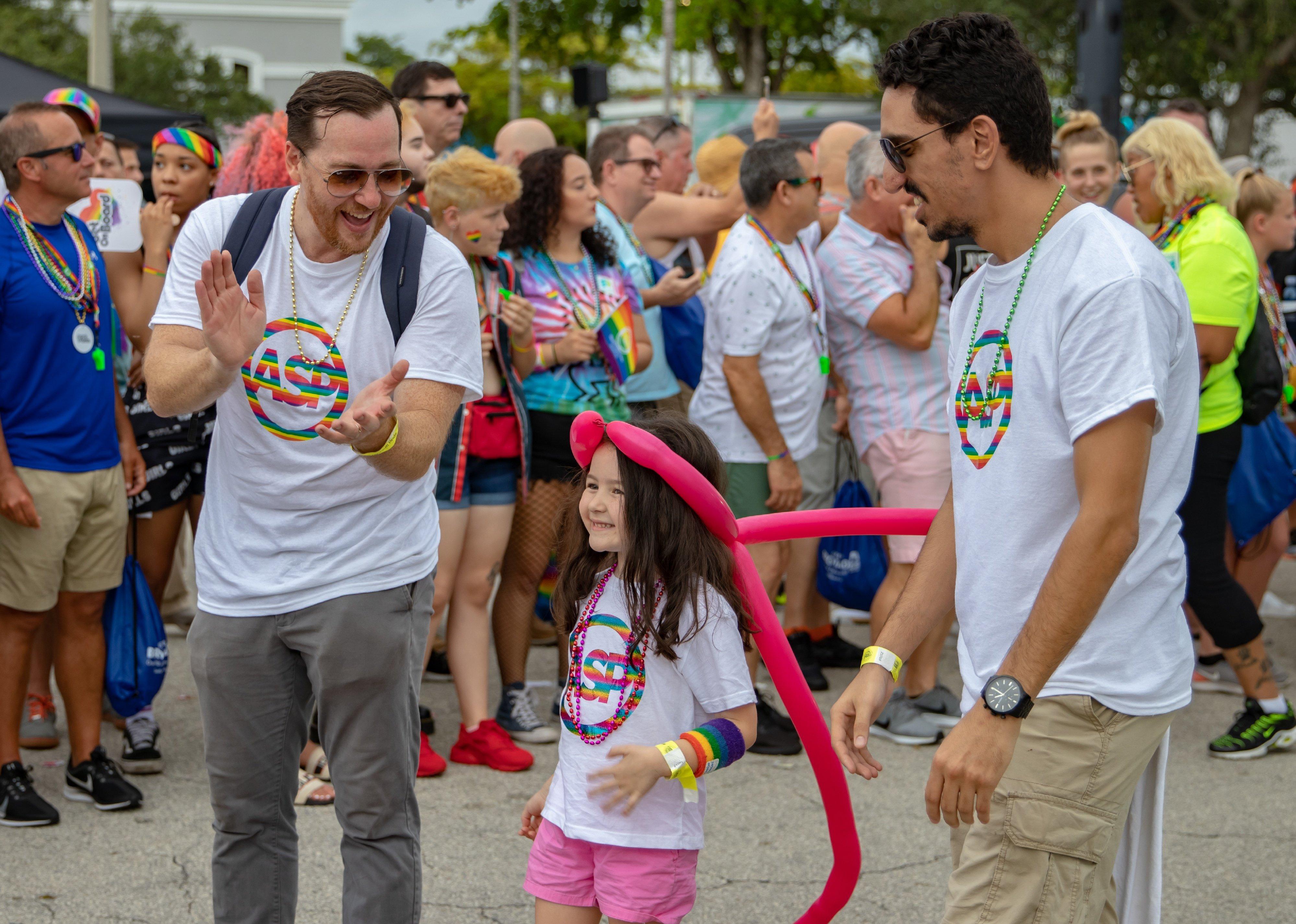
See how many LGBT people have children in Florida
LGBTQ+ people have historically been left out of conversations about family planning, custody rights, and cultural and legal ideas about what a family should look like. Before the 1970s, it was not unusual for a gay or lesbian parent to lose custody of their child—or for their parental rights to be taken away completely—after coming out. Today, LGBTQ+ families continue to contend with discrimination when trying to start a family—whether through fostering, adoption, or assisted reproduction.
Currently, laws that protect LGBTQ+ people in matters of fostering and adoption vary state to state. Twenty-nine states and Washington D.C. prohibit foster and adoption agencies from discrimination on the basis of sexual orientation or gender identity, while 12 states permit these agencies to refuse to provide services to LGBTQ+ people on the basis of religious beliefs.
But where in the U.S. are LGBTQ+ folks raising their families? To find out, Stacker cited LGBT demographic data from the Williams Institute based on Gallup surveys conducted between 2015-2017, and looked at LGBT family demographics in every state and Washington D.C. Respondents who said they identified as lesbian, gay, bisexual, or transgender were considered LGBT and were not asked whether they identify under the wider umbrella term LGBTQ+. The average age of LGBT respondents nationally was 36.4 years.
Read on to find out how many LGBT-identifying people have kids in your state, or check out the national list here.
Florida by the numbers
- Population identifying as LGBT: 4.6%
- LGBT population with children: 24.0%
- LGBT couples with children: 13.3%
As recently as June 2021, the Supreme Court dealt a blow to queer parents trying to start families in their ruling on Fulton v. City of Philadelphia. The court sided with a Catholic social services agency, which refused to work with same-sex couples applying to foster children, arguing that the agency's First Amendment rights took precedence over charges of discrimination.
Assisted reproduction services like in vitro fertilization (IVF) have also historically been less accessible to LGBTQ+ people, in part because of a limiting definition of infertility. The CDC defines infertility as "not being able to get pregnant (conceive) after one year (or longer) of unprotected sex." Since many health insurance plans use this definition to determine qualification for treatment, couples who are not cisgender and heterosexual are often excluded from coverage. However, this may soon change, as the Biden administration is considering expanding the definition of infertility listed in the Affordable Care Act to be more inclusive of LGBTQ+ people.
Other changes to legislation in some states have improved access to family services for LGBTQ+ people. In late May 2022, Colorado Gov. Jared Polis—who is openly gay—signed a law streamlining the process of giving queer parents legal custody of their non-gestational children. And the Supreme Court ruled in 2017 that LGBTQ+ parents have the same right to be co-listed on their child's birth certificate as heterosexual couples.
Continue reading to see how many LGBT people have children in other states in your region.
Alabama
- Population identifying as LGBT: 3.1%
- LGBT population with children: 24.0%
- LGBT couples with children: 20.4%
Georgia
- Population identifying as LGBT: 4.5%
- LGBT population with children: 27.0%
- LGBT couples with children: 19.6%



